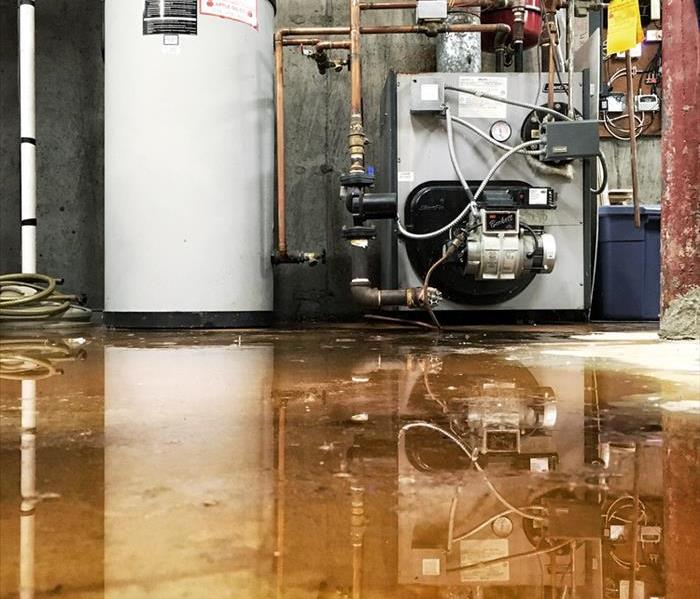3 Steps To Dry a Flooded Furnace
9/26/2019 (Permalink)
3 Steps To Dry a Flooded Furnace
Commercial property owners that have experienced a furnace flood know how disastrous this water damage can be. The risk of furnace flooding is higher during the winter, as pipes with are more prone to breakage due to pressure buildup around frozen blockages. If a flood or pipe break fills a furnace with water, these three steps can resolve the situation.
Stop the Water Source
If a broken pipe is leaking into a furnace, the top priorities include stopping the flow of electricity or gas to the appliance and resolving the plumbing problem as quickly as possible. Contact a plumber as soon as you see evidence that a pipe has broken. You may also want to go ahead and schedule consultations with an appliance repair specialist and a damage restoration service.
Extract Water
Even if there is no chance of restoring the function of a flooded furnace, it is necessary to extract water from the appliance and the surrounding area and promote drying. This helps to prevent primary water damage from causing structural problems and secondary damage, such as mold, from developing over the days and weeks after a furnace flood.
Replace the Furnace
Most furnaces cannot be safely operated after water damage. Natural gas furnaces contain sensitive parts critical for safety which tend to sustain irreparable damage. If replacement is necessary, consider relocating the new furnace away from areas prone to water damage. You may also want to schedule an air duct cleaning to stop any mold spores that are present from spreading throughout a structure.
A furnace flood usually necessitates furnace replacement. If the first commercial appliance service that you contact offers to repair parts following major damage, you may want to seek second or third opinions. Refurbished furnace components may be more likely to result in fires or other costly damage to a building located in Arlington Heights, IL.






 24/7 Emergency Service
24/7 Emergency Service
